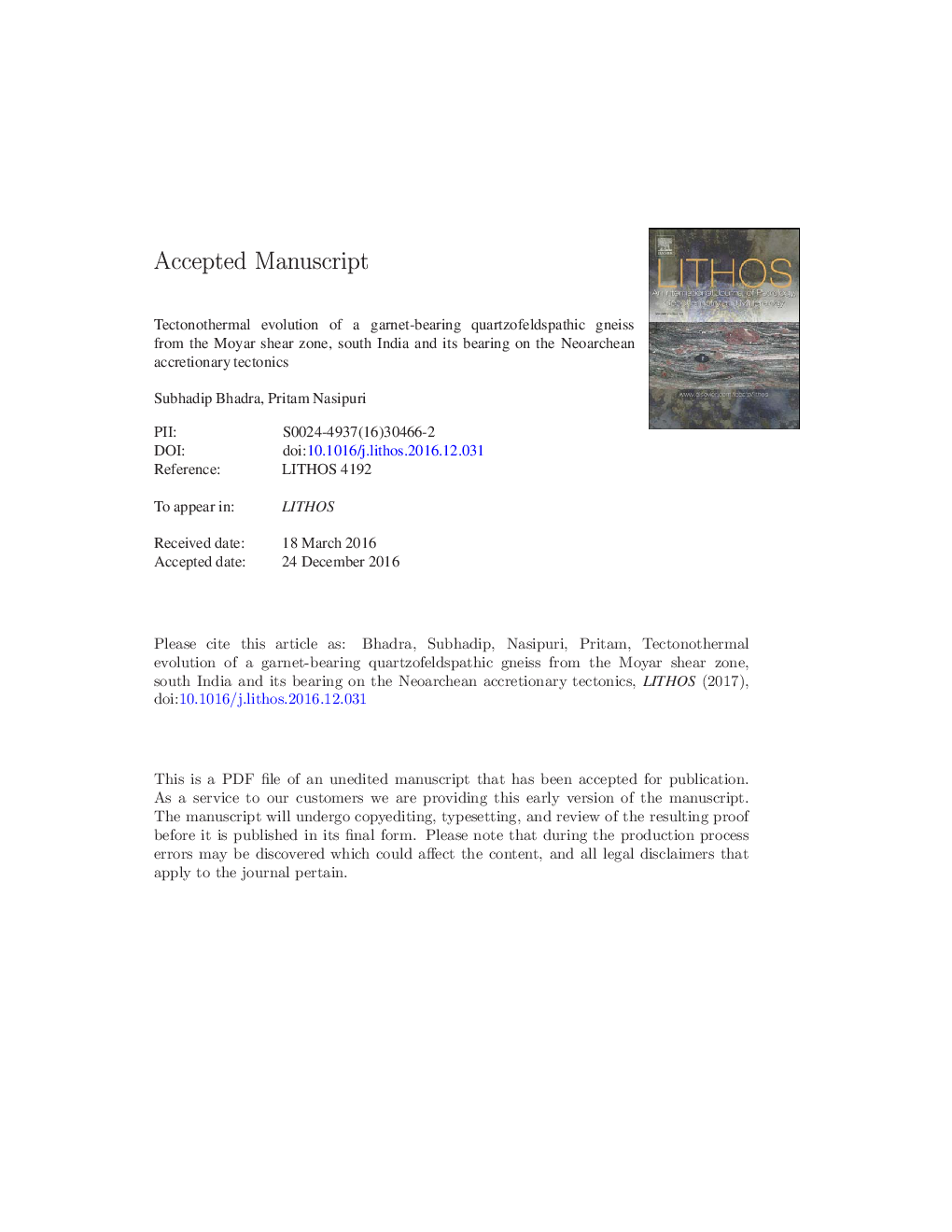| کد مقاله | کد نشریه | سال انتشار | مقاله انگلیسی | نسخه تمام متن |
|---|---|---|---|---|
| 5784268 | 1638635 | 2017 | 64 صفحه PDF | دانلود رایگان |
عنوان انگلیسی مقاله ISI
Tectonothermal evolution of a garnet-bearing quartzofeldspathic gneiss from the Moyar shear zone, south India and its bearing on the Neoarchean accretionary tectonics
ترجمه فارسی عنوان
تکامل تکتونوترمال یک گنایس کوارتزوفلدسپاتی گارنت از منطقه برش موآیر، جنوب هند و تحمل آن در ساخت تکتونیک های تجمعی نئوکچر
دانلود مقاله + سفارش ترجمه
دانلود مقاله ISI انگلیسی
رایگان برای ایرانیان
موضوعات مرتبط
مهندسی و علوم پایه
علوم زمین و سیارات
ژئوشیمی و پترولوژی
چکیده انگلیسی
We present mesoscale structural development across the Nilgiri Block and the flanking Moyar and Bhavani shear zones in south India, and detailed mineral-chemical and geothermobarometric studies of a garnet-bearing quartzofeldspathic gneiss from the easternmost part of the Moyar shear zone. Barring a narrow (< 100 μm) rim domain, major element distribution within garnet porphyroblasts reveals complete chemical homogenization. The absence of growth zoning in garnet porphyroblasts may suggest a protracted post-garnet growth residence period of the rock at elevated temperatures. Chemical zoning near garnet rim reflects the signature of both retrograde net-transfer (ReNTR) and retrograde exchange (ReER) equilibria. The ReNTR-equilibrium is recognized by prominent Mn kick-up in garnet, whereas the ReER-equilibrium is identified by divergence of Fe and Mg between garnet and biotite. Diffusion modelling, though qualitative, of the observed chemical zoning in garnet suggests an initial phase of rapid (~ 150 °C/Ma) cooling, which may have been achieved by tectonic-extrusion-induced exhumation. Pressure-temperature conditions for peak, ReNTR and ReER are constrained, respectively, at 900 °C; 9-11 kbar, 735 °C; 8 kbar and 685 °C; 7.8 kbar. Analyses of structural fabrics establish oppositely verging nature of the Moyar and Bhavani shear zone and may suggest a doubly vergent orogenic development, with the former as prowedge and the latter as retrowedge. The presence of the Nilgiri Block as a topographically elevated region between these oppositely dipping thrust faults indeed corroborates a doubly vergent orogenic setup. The tectonic scenario is comparable with a continent-continent collision type accretionary tectonics. Peak high-P granulite facies metamorphism and post-peak long residence period of the studied quartzofeldspathic gneiss at deep crustal level suitably fit into the Neoarchean crustal dynamics resulting in crustal thickening, in the order of ~ 41 km, within the Nilgiri Block.
ناشر
Database: Elsevier - ScienceDirect (ساینس دایرکت)
Journal: Lithos - Volumes 274â275, March 2017, Pages 1-18
Journal: Lithos - Volumes 274â275, March 2017, Pages 1-18
نویسندگان
Subhadip Bhadra, Pritam Nasipuri,
